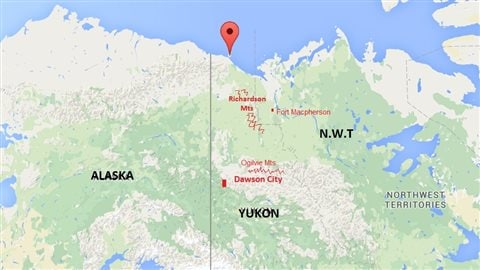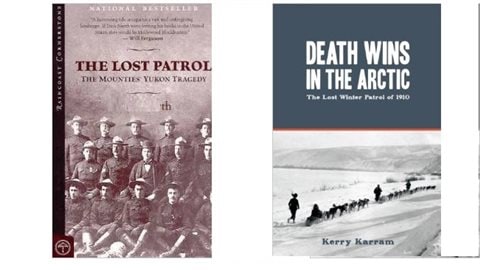They say that pride goeth before a fall, and that was surely the case in December 1910 for a mail patrol in the high Arctic
On February 5th , 1911 a starving, half-frozen Inspector Francis Fitzgerald scribbled a note in his logbook.
Fitzgerald who had been the first commander of the Royal Northwest Mounted Police post on Herschel Island, and who had left Fort Macpherson over a month earlier by dogsled, wrote that he and his three constables were so weak they could only continue a short distance.
It was his last entry.

Inspector Fitzgerald, a native of Halifax Nova Scotia was a Boer War veteran but had a long experience in the far north. In 1903 he was sent to establish a police post on Herschel Island where he remained for six years.
A lonely existence, the only visitors were a few whaling ships and occasional police patrols by whaleboat and dog team.
In late 1910 in recognition of his service, he was selected as one of the contingent to be sent to the coronation of George V. To leave the north, he would lead the annual patrol with mail from Fort Macpherson in the Northwest Territories to Dawson City, Yukon, some 750 kilometres away. From there he would head south.
Competition among members was common, and thinking he would use the opportunity to break the time record set by an earlier patrol, he lightened the load of supplies on the three dogsleds in an attempt to make better time.
This proved to be a fatal mistake for someone so well-versed in the North, and the unforgiving climate and wilderness.
The group left Ft Macpherson on December 21st 1910.
They soon ran into trouble, slowed by heavy snow and temperatures which sometimes dropped to -62F.
Then they took a wrong turn off Wind River on Forset Creek and could not find the pass through the Ogilvie Mountains.
Several days were spent trying to find the trail before Fitzgerald finally admitted they were lost and had to turn back to Fort Macpherson on January 18th.
But they had used up valuable time and critical supplies which had by then run out, and they were now forced to begin eating the dogs.

On February 5, 1911 Fitzgerald scribbled a last note in his logbook. It said they were down to five dogs left, and the group was so weak they could only travel a short distance
With the dogs gone, two constables, too weak to continue were left at a camp where one died of exposure and the other committed suicide. Fitzergerald and Constable Charretier had continued on snowshoes but made only a short distance before they too succumbed to exposure around February 14th.
In February, when the patrol failed to show up in Dawson City, the detachment there realized something had gone wrong, Inspector Jack Dempster with two other Constables and guide Charles Stewart set out to find the patrol.
In March they found the makeshift shelter where the two constables had died, and then a little further, the bodies of Fitzgerald and the other constable.
On Fitzgerald’s body was found his final will, a note scribbled in charcoal read “All money in dispatch bag and bank, clothes, etc., I leave to my dearly beloved mother, Mrs. John Fitzgerald, Halifax. God bless all”
The emaciated bodies of the “lost patrol” were found, still about 50 km short of the safety of Fort Macpherson where they are now buried.







For reasons beyond our control, and for an undetermined period of time, our comment section is now closed. However, our social networks remain open to your contributions.